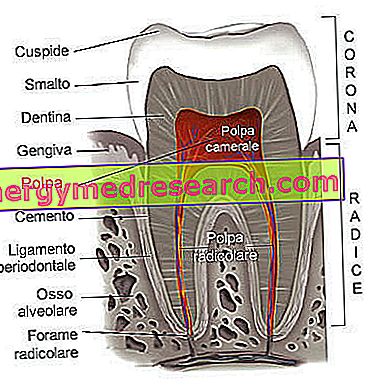By Dr. Francesco Cundo '
Energy needs of the elderly
Energy expenditure is reduced with age. The main components are:
the drop in basal metabolism (-8% between 60-90 years)
less physical activity (MORE SCARCE)
The variations do not occur linearly but accelerate significantly at 75 years.
For these reasons, the needs for the elderly are calculated for two distinct age groups: 60-74 years and over 75.
Protein requirement
In general, the ideal amount of proteins that an individual of the third age group should take within a day is calculated as follows:
g protein = Kg of "ideal" body weight
This formula is independent of physical activity and sex (eg: a person with an ideal weight of 60 kg should take 60 g of protein daily).
RECOMMENDED PROTEIN FOODS
Fish - Fish is an excellent food for everyone, but especially for the elderly, due to its content in polyunsaturated fatty acids.
Meat - Beef, chicken, veal is preferable.
Milk - Excellent source of calcium. Prefer the partially skimmed one.
Cheeses - They are an important protein source, to be valued at this age also for their calcium and phosphorus content.
Yogurt - Natural or fruit yoghurt can be more digestible than milk. It also plays an important anti-accumulatory and intestinal bacterial flora in the intestine.
Legumes - They should be considered as an excellent alternative to animal products. In fact, they perform a cholesterol-lowering action. To be used if necessary to improve digestibility. The association with cereals makes it a balanced dish.
Oily dried fruit - It is a recommended protein resource and an excellent source of essential fatty acids. However, it is little consumed by the elderly due to masticatory difficulties and poor digestibility; obvious, in part, with a shredding (for example in the middle of the salad).
Lipid and carbohydrate requirements
In the elderly, there are no significant changes in lipid and carbohydrate requirements compared to adults.
The same principles apply as for 18 to 60 years.
Lipids: 25-30% of energy max 10% saturated
2.0% polyunsaturated Ω6
0.5% polyunsaturated Ω3
Carbohydrates: 55-65% of the energy max 10% simple sugars
Particular attention must be paid to the correct intake of Vitamin C and Vitamin D. Although the needs are in line with those of the adult population, the risk of specific deficiencies can be identified in a monotonous diet, free of fresh foods (Vitamin C) and in a sedentary lifestyle with low exposure to sunlight (Vitamin D)
Important minerals for the elderly
Football
The fragility of bones can be attributed to a reduced intake of calcium-supplying foods, as well as to the slowing down of endocrine gland secretions and a lack of vitamin D.
As already mentioned, the consumption of dairy products is very important, where the calcium / phosphorus ratio is optimal for the body.
Iron
Anemia caused by a combination of factors is common in the elderly, among which a reduced absorption of iron from the intestine can be detected.
Furthermore this mineral is contained in some foods, which appear to be precisely those that the elderly reduce for various reasons: for example due to the high cost (meat), difficulty in chewing (dried fruit, whole grains, raw vegetables), for digestive difficulties (legumes).
Potassium
Excessive use of laxatives and diuretics, sometimes combined with abundant sweating can give rise to deficiencies of potassium, a mineral that the body has great need in the years of old age, in which blood pressure is unstable, the use of liquids body and protein is less effective and the heart is more fatigued.
Sodium
It is a potassium "thief". Although it plays an important role in the chemistry of the organism in old age, it must be reduced, also given its correlation with water retention, and therefore with the increase in blood pressure.



